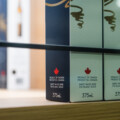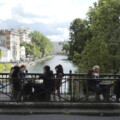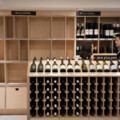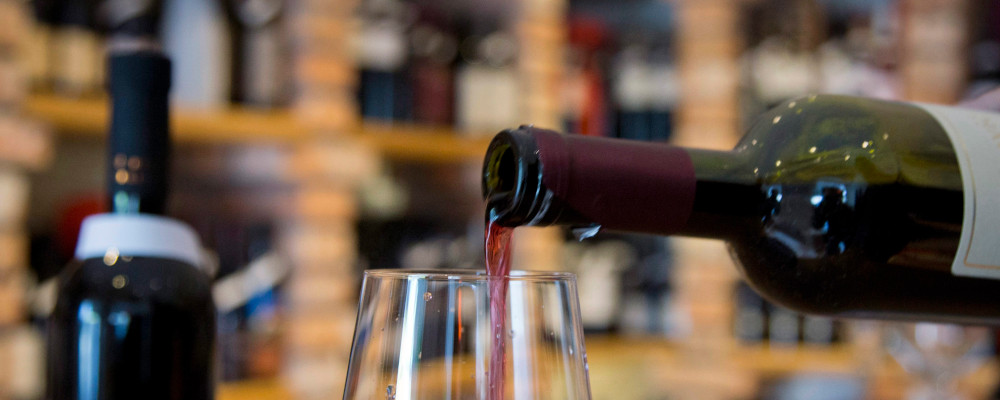Three vignerons walk into a bar. This isn’t a joke; it’s true. I saw it happen and it was the beginning of a sort of wine tasting put on by friends—two old and one new—not long ago at the Archive Wine Bar in Toronto’s Little Portugal.
Google translates vigneron into “winemaker”. That’s not false, but it doesn’t quite cover the expanse of the word in French, at least as I understand it. For instance, my 1994 Oxford-Hachette French dictionary translates vigneron (and its feminine version, vigneronne) as “winegrower”. While one can certainly be both, it’s not necessarily the case.
Without authority, I have always thought the closest translation to vigneron was “vintner”. But when I looked up that word in my wife’s two-volume New Oxford Shorter English Dictionary (Thumb Index Edition, 1993), the definition for vintner was:
“A person who deals in or sells wine, a wine merchant. Formerly also, an innkeeper selling wine.”
This definition is similarly not a whole translation of my working knowledge of the word vigneron, but it’s certainly part of it. The three gentlemen, in progressive stages of middle age, who walked into the bar qualify for all three meanings of the term, though strictly speaking they rely on another person to physically make the wine under the label for which they bear at least some responsibility.
The first man in the door was Trevor Gulliver of London, England and La Livienère, France, who I have previously written about at The Hub, as both a vigneron and a restaurateur, at the famous St. John. Trevor, who is a friend, came bearing bottles of both the St. John label of French wines and Boulevard Napoleon, the label he owns and operates in the Languedoc with Benjamin Darnault.
The second man in the door was Artur Gama, proprietor with his wife Eva Moura Guedes, of Quinta da Boa of Esperança near Lisbon, Portugal. He and Trevor are themselves friends and most recently toured Artur’s newest venture the Quinta do Cardo vineyards in the uplands of the Douro Valley in the Northern end of the country, along with the third man.
And the third man was Charles Baker of Toronto, Ontario. Charles is also a friend who, nearly two decades ago, took me on my very first vineyard and winery tour (a story for another column). Charles runs Cru Wine Merchants, which imports Trevor and Artur’s wines, as well as Loop Line, a bottle shop and wine bar in its own right. Charles also lends his name to Charles Baker Riesling, his line of single vineyard Niagara white wines made at the winery at Stratus.
Of course, they all brought wines. Too many to enumerate and comment on in this limited column space. But, what danced for me in particular were the wines below.
The Charles Baker Riesling 2019 is a kind of Platonic ideal of the Niagara expression of the grape. It’s got a bit of sugar because it needs it to balance its northern climate acidity. It’s all lemons and, at a relatively young age, a hint of what the Brits would call petrol. It’s also $20 at my local provincial liquor retail monopoly, which is a feat on its own for this fancy wine. Charles Baker’s Riesling reminded me how much I like this grape and how well it does in Upper Canada.
Artur’s wines played on Atlantic maritime influence at Esperança or altitude from the hills of the upper Douro at Cardo. The 2020 Quinta da Boa Esperança Aristo Branco was a lovely mineral and citrus splash of white wine, which conjured dreams of a seaside lunch as long as its persistent finish. Cardo means “thistle”, a thorny plant that’s usually at home in northern latitudes like Scotland but also thrives in higher latitudes, like the 750 meters above sea level that the organic vineyards that make the 2019 Quinta do Cardo Tinto lie. A graphite seasoning, courtesy of granitic soils, ran through the deep black and blue fruit in this weighty yet spry wine. I’d save it for a slow-cooked, braised meat dinner on a cold autumn night.
Of Trevor’s wines, two stood out in particular. The 2019 St. John Claret is exactly as a decent bottle of Bordeaux red ought to be, which is to say it precisely delivers on the St. John brand, and at the first sip I was transported to a long lunch in London. This is a taste that’s hard to find on this side of the pond: a calm cassis-driven quaffer of a red. Nothing green, just a perfect balance of fruit, acidity, and a bit of sandy tannin to hold it all together.
The star of the night for me, though, was from Trevor’s Minervois winery: the 2019 Boulevard Napoleon Carignan. The old vines that make this wine come from the La Livinière sub-appellation of Minervois, which lies in the rolling hills between Narbonne and Carcassone. But this wine can only be labelled “Vin de France”, the lowest possible designation, because making red wine with only Carignan is forbidden in the Conseil’s Cahier des Charges (book of rules).

As a young man, Trevor Gulliver made his mark in the London restaurant scene by converting old public buildings in looked-over neighbourhoods, like a firehall near Waterloo Station, into hip new destinations. He still does, and I like to think the Blvd. Napoleon single variety wines are a sort of extension of this vision. Carignan, in particular, is a grape that attracted little respect until recently. It was meant as a sort of filler to a blend from the Languedoc.
I had thoroughly enjoyed my share of a bottle of the 2015 Napoleon Carignan at lunch with Trevor in the summer of 2022, so I greedily eyed the bottle of the 2019 when it was pulled from Charles’ bag and put onto the table. I was not disappointed. Old vine Carignan from the terroirs of the Western Mediterranean can deliver a lightning-like energy of black fruit. It’s almost always tamed with red fruit Grenache in a blend, and it takes a kind of courage to let it be on its own. It might be too much. But sometimes too much is just enough. And this wine just makes me happy.
Perhaps the word vigneron defies definition because all really good things do. I am glad for the vignerons and vigeronnes out there pushing their vision and finding space in the market for it. Please keep the bottles coming.
Recommended for You

Malcolm Jolley: The comfort of familiar favourites—or the fun of finding new wines?

Malcolm Jolley: An ‘Elbows Up’ wine project everyone can get behind

Malcolm Jolley: Need some summer wines? Look no further than the food-friendly, low-sugar sippers of the sunny Southern Rhône

Malcolm Jolley: Need a date-night drink? French Northern Rhône wines are worth the investment




